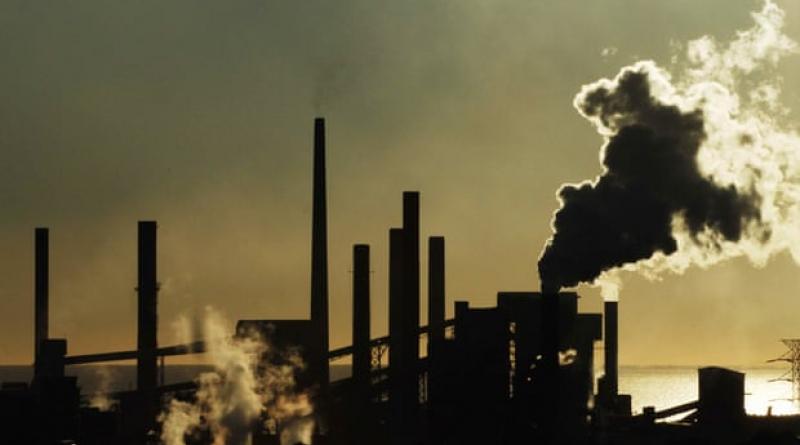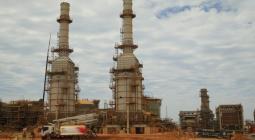‘No purpose’ to Coalition’s climate policy after big polluters increase emissions by 1.6m tonnes.

Government under fire after major companies again given green light to lift carbon emissions without penalty.
Industry and environment groups have questioned the point of the Coalitiongovernment’s “safeguard mechanism” – which promised to keep a lid on industrial greenhouse gas emissions – after major companies were allowed to again increase pollution without penalty.
BHP, Anglo American and Tomago Aluminium were among companies given the green light to increase emissions by a combined 1.6m tonnes of carbon dioxide a year in an announcement by the Clean Energy Regulator in late July.
The permitted increases are nearly equivalent to the 1.7m tonnes of emissions reduction purchased by the government through its main climate policy, the $2.5bn emissions reduction fund (ERF), at an auction in March. Those cutscost taxpayers $27.6m.
The Australian Conservation Foundation (ACF) said it showed there was no point in the safeguard mechanism existing in its current form. The scheme was initially promised to stop increases in industrial emissions unreasonably wiping out cuts paid for through the ERF. Despite this, companies bound by the safeguard increased emissions by 12% in its first two years of operation.
“It is worse than a do-nothing policy. It is achieving the exact opposite of what it was designed to achieve,” the ACF’s climate change program manager, Gavan McFadzean, said.
Tennant Reed, from the Australian Industry Group, said the mechanism currently had compliance costs for businesses “but no real purpose”. He said it could be used as a building block for reducing industrial emissions, but “right now it’s more like a single Lego block lying on the floor – without effect, unless you step on it”.
The safeguard mechanism sets an annual or multi-year pollution limit, known as a baseline, for industrial facilities that emit more than 100,000 tonnes a year.
Original baselines were based on either the highest point in pollution at a site between 2009 and 2014 or a forecast of future emissions. Companies that exceeded that level were expected to pay to offset the additional emissions. In practice, some had to pay but many companies that breached baselines were allowed to increase their limit without penalty.
Under changes being introduced in March, all facilities are being moved to limits based not on their total emissions, but on emissions intensity – how much they expect to emit per unit of production. It will confirm that companies can move limits up or down over time depending on how their business is performing.
The July data shows Anglo American has been granted a 33% increase in the allowed annual emissions from its Capcoal mine in Queensland’s Bowen Basin, from 1.98m tonnes to 2.63m tonnes a year. An Anglo American spokesperson said the increase was required as the underground metallurgical coalmine had moved into deeper and “naturally more geologically gassy” conditions. “The safeguard mechanism anticipates that in comparing emissions between years these kinds of factors are taken into account,” the spokesperson said.
The Australian Conservation Foundation said if the mine emitted up to its limit the increase would be equivalent to putting more than 140,000 extra cars on the road.
BHP owns or co-owns six of the facilities granted an increase in emissions baseline. They include iron ore mines in Western Australia, coalmines in Queensland, Olympic Dam in South Australia and the Gippsland Basin oil and gas joint venture operated by Esso. Combined, their emissions allowance has risen by 753,099 tonnes a year.
A BHP spokesperson said the increased baselines were consistent with its company-wide goals of keeping its total emissions at or below 2017 levels in 2022 and reaching net-zero emissions by 2050.
Other sites granted an increased emissions limit included the Tomago aluminium smelter in New South Wales (a 118,000 tonne, or 10%, rise) and a Roy Hill iron ore mine in the Pilbara (a 55,000 tonnes, or 14%, increase).
New facilities granted baselines in addition to the newly permitted 1.6m tonnes emissions rise included a coalmine at Mount Pleasant, NSW, owned by Mach Energy, which can emit up to 663,971 tonnes a year.
Labor’s climate change and energy spokesman, Mark Butler, said the safeguard mechanism had been “completely ineffective” in capping pollution, let alone bringing it down. “The Liberals continue to refuse to give the policy any teeth, which shouldn’t be surprising given this government’s ideological opposition to real action on climate change,” he said.
The Greens’ leader, Adam Bandt, said the scheme had been designed to meet the needs of big industry, not the climate. He called for the reintroduction of a carbon price. “If you pull someone over for doing 90 in a 40 km/hr school zone you should fine them, not lift the limit to 110,” he said. “The government has let the polluters write the rules.”
Reed, who works on climate, energy and environment policy for the Australian Industry Group, said the mechanism could help cut industrial emissions if it included updated baselines, a predictable plan to make them tighter over time and support for companies that compete internationally.
A spokesperson for the energy and emissions reduction minister, Angus Taylor, did not answer a question about how the government planned to reduce industrial emissions, but denied money spend on the ERF was wasted. They said it had delivered 14.8m tonnes of emissions abatement. “Without the ERF, Australia’s emissions would have been higher,” the spokesperson said.
A review commissioned by Taylor, led by the former Business Council of Australian president Grant King, recommended in May that the mechanism be changed to introduce “below-baseline crediting” to reward companies that reduced emissions below their cap.
To qualify, companies would have had to undertake “transformative” projects that reduced emissions intensity (the amount they emit per unit of production) so they were not rewarded for just producing less or shutting down.
Taylor said the government accepted the recommendation and would begin consulting with industry on how to establish a “low-emissions technology deployment incentive scheme”. No further details have been released.
The proposal could be a step towards transforming the safeguard mechanisminto what it was initially intended to become – an emissions trading scheme under which companies could buy and sell carbon credits and limits could be reduced over time to cut carbon pollution. Taylor has rejected suggestions the safeguard mechanism was a form of carbon pricing or would become one.
McFadzean said: “Frustratingly, the safeguard mechanism actually has the basic architecture required to drive down industry emissions. The thing missing is political will.”
National emissions were largely flat under the Coalition government before the Covid-19 pandemic shut down the economy. They dipped slightly in the most recent greenhouse accounts, but industrial emissions continued to rise.
12 August 2020
The Guardian




